Marshall Heston 120 vs Sonos Arc Ultra: which Dolby Atmos soundbar should you buy?
Can Marshall’s rock and roll aesthetics deliver enough in the audio department to topple the mighty Sonos Arc Ultra?
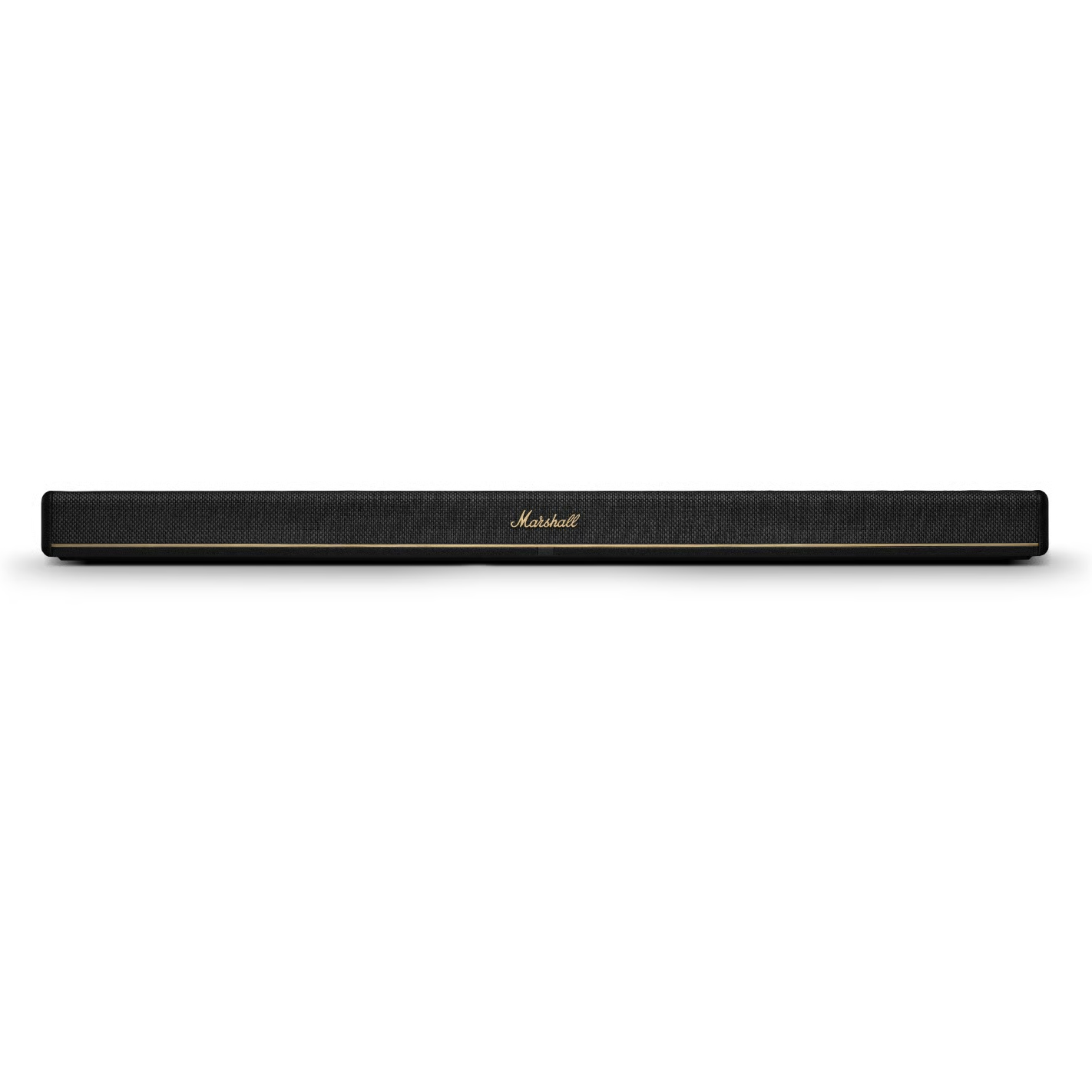
Connections: HDMI eARC, HDMI 2.1 input, stereo RCA, subwoofer out
Format support: Dolby Atmos, DTS:X
Bluetooth: Yes
Dimensions (hwd): 7.6 x 110 x 15cm
Weight: 7kg
Marshall’s ambitious debut soundbar combines distinctive rock and roll aesthetics with comprehensive format support, including DTS:X, and HDMI passthrough. But fundamental limitations in the punch, dynamics and Atmos-ness of its delivery prevent it from competing effectively against established premium alternatives such as the Sonos Arc Ultra.
Pros
- Clear and detailed dialogue
- Decent amount of bass
- Unique design with tactile knobs
Cons
- Sound lacks dynamics and punch
- Slightly bright, sibilant treble
- Weak with Dolby Atmos

Connections: HDMI eARC
Format support: Dolby Atmos
Bluetooth: Yes
Dimensions (hwd): 6.4 x 130 x 11 cm
Weight: 5.5kg
Sonos demonstrates its experience through its innovative Sound Motion bass technology and exceptional spatial audio implementation. The Ultra delivers a precise, engaging, and immersive performance that comfortably beats its Marshall rival on sound. Format-support limitations and connectivity constraints may restrict its appeal for some users, but for most, it's the clear winner.
Pros
- Clean, precise, spacious and three-dimensional sound
- Deep, tuneful and expressive bass
- Terrifically detailed for a soundbar
Cons
- No HDMI passthrough
- No DTS support
- Still some app issues
Even the best TVs will benefit from a dedicated audio upgrade in the form of one of the best soundbars. And if you're in the market for a premium Dolby Atmos model, the Marshall Heston 120 and Sonos Arc Ultra are likely to be on your shortlist.
In one corner, Marshall’s Heston 120 brings rock and roll heritage and distinctive styling to its first soundbar attempt. In the other, Sonos delivers its proven home audio excellence with the Arc Ultra. Both target the same premium territory, but their approaches to achieving audio supremacy couldn't be more different.
The Marshall emphasises visual impact and promises to be “the loudest thing for your TV”, drawing on decades of guitar amplifier expertise. Sonos counters with refined engineering, breakthrough Sound Motion technology, and the ecosystem integration that has made it a household name.
The question, then, is whether Marshall’s bold debut can challenge Sonos's established dominance. So, which one deserves the coveted spot under your TV? Let’s find out.
Marshall Heston 120 vs Sonos Arc Ultra: price
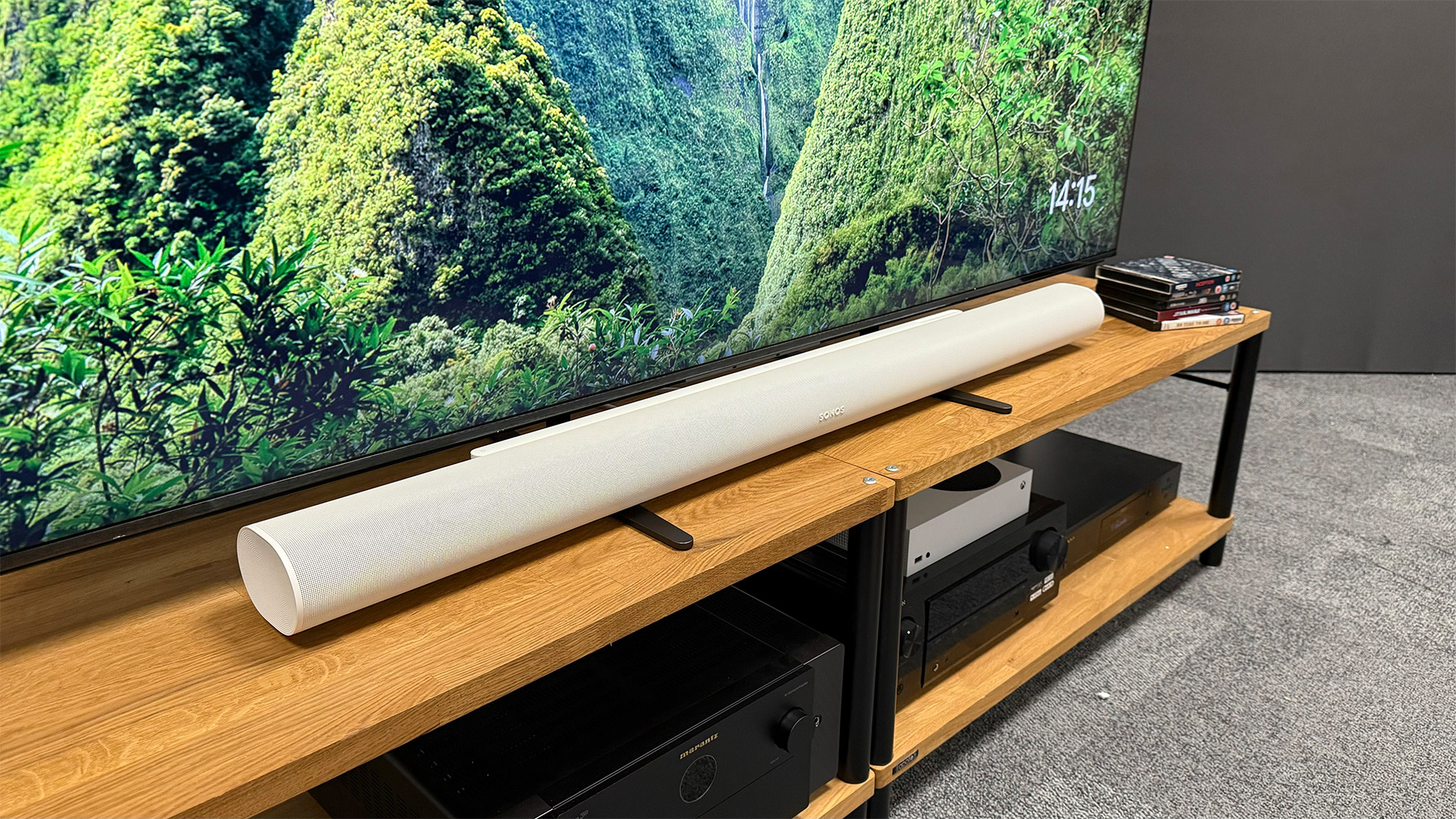
The Marshall Heston 120 commands £900 / $1000 / AU$1799, positioning it firmly in premium territory alongside established market leaders. This pricing reflects Marshall’s confidence in translating its amplifier heritage into the soundbar realm, though it represents a significant investment for the brand’s first attempt in this category.
Sonos prices the Arc Ultra at £999 / $999 / AU$1799, making it marginally more expensive in most markets. If you keep an eye out during sales events, though, chances are you’ll have a few opportunities throughout the year to grab the Arc Ultra at a discount.
Still, by being officially £99 cheaper in the UK, the Marshall Heston 120 just squeaks this round.
The latest hi-fi, home cinema and tech news, reviews, buying advice and deals, direct to your inbox.
**Winner: Marshall Heston 120**
Marshall Heston 120 vs Sonos Arc Ultra: design and build
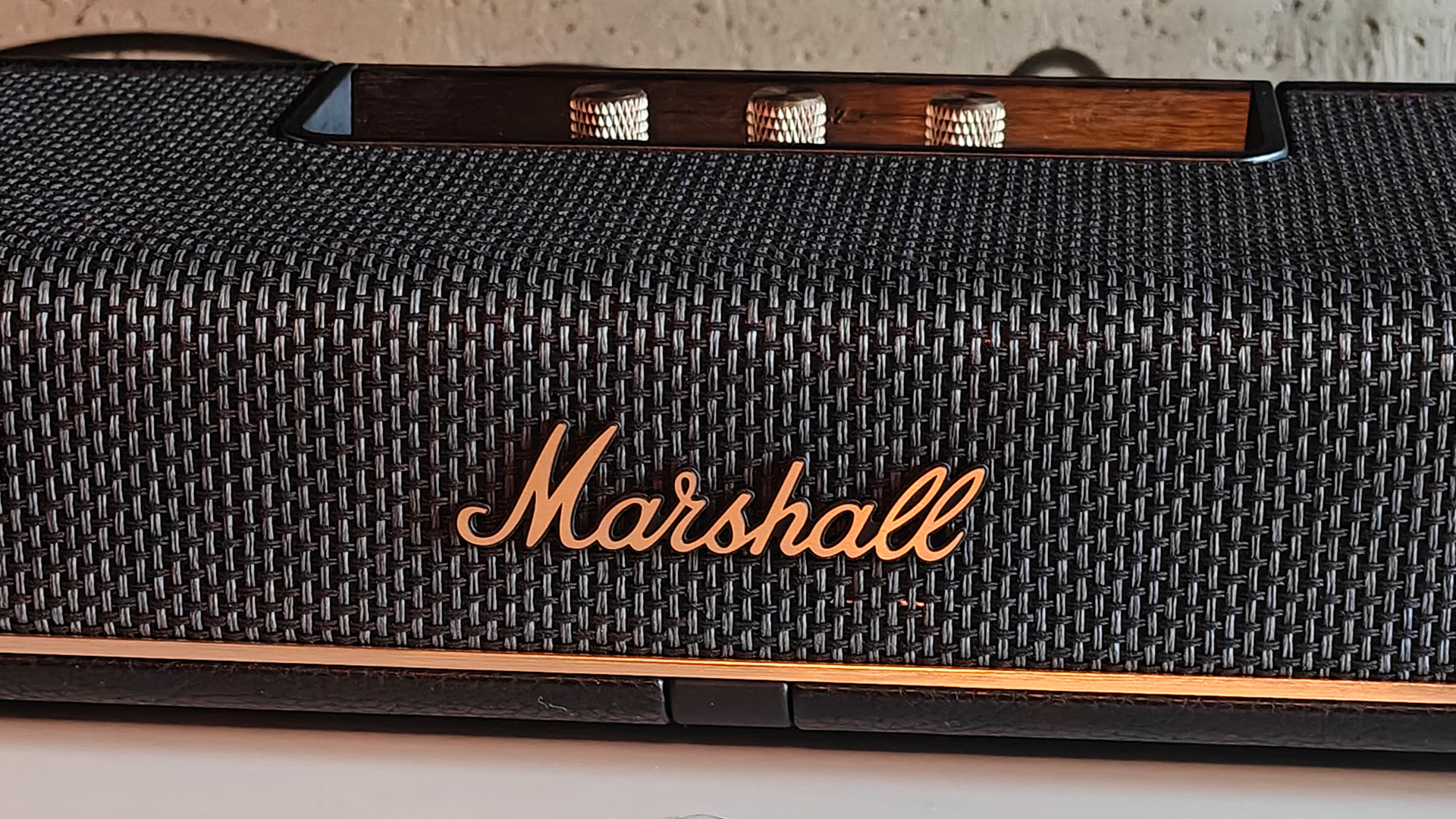
Marshall has crafted something refreshingly distinctive for a soundbar. The Heston 120's retro aesthetic draws heavily on the brand's amplifier heritage, featuring rotating metal knobs on the top surface that illuminate red when activated.
The removable woven paper grille, wrapped leather trims, and brushed metal panels create a textured, tactile experience that stands apart from typical soundbar uniformity, while three customisable buttons provide quick access to favourite playlists or radio stations.
Overall, the whole ensemble will feel right at home for any musician with a penchant for Marshall amps.
At 110cm in length, though, the Heston 120 demands a fair amount of space, and might overwhelm smaller setups. The unique styling, while appealing to Marshall enthusiasts, may not suit all tastes – especially if you would prefer your soundbar to blend in with its surroundings, rather than make a statement.
Sonos takes a more refined approach with the Arc Ultra, maintaining its minimalist perforated grille design. The subtle dimensional changes from its predecessor – slightly wider at 118cm but lower in height at 7.5cm – also reduce the likelihood of screen obstruction when it is placed in front of a television.
The rear ledge houses touch controls that were previously integrated into the main grille, creating cleaner front aesthetics while maintaining functionality.
Unlike many soundbar comparisons where the designs are similar, then, here we have two very different takes. Given that design is subjective and that both products nail their intended aesthetics, this round depends entirely on your personal preference (and/or available space).
**Winner: Draw**
Marshall Heston 120 vs Sonos Arc Ultra: features and connectivity
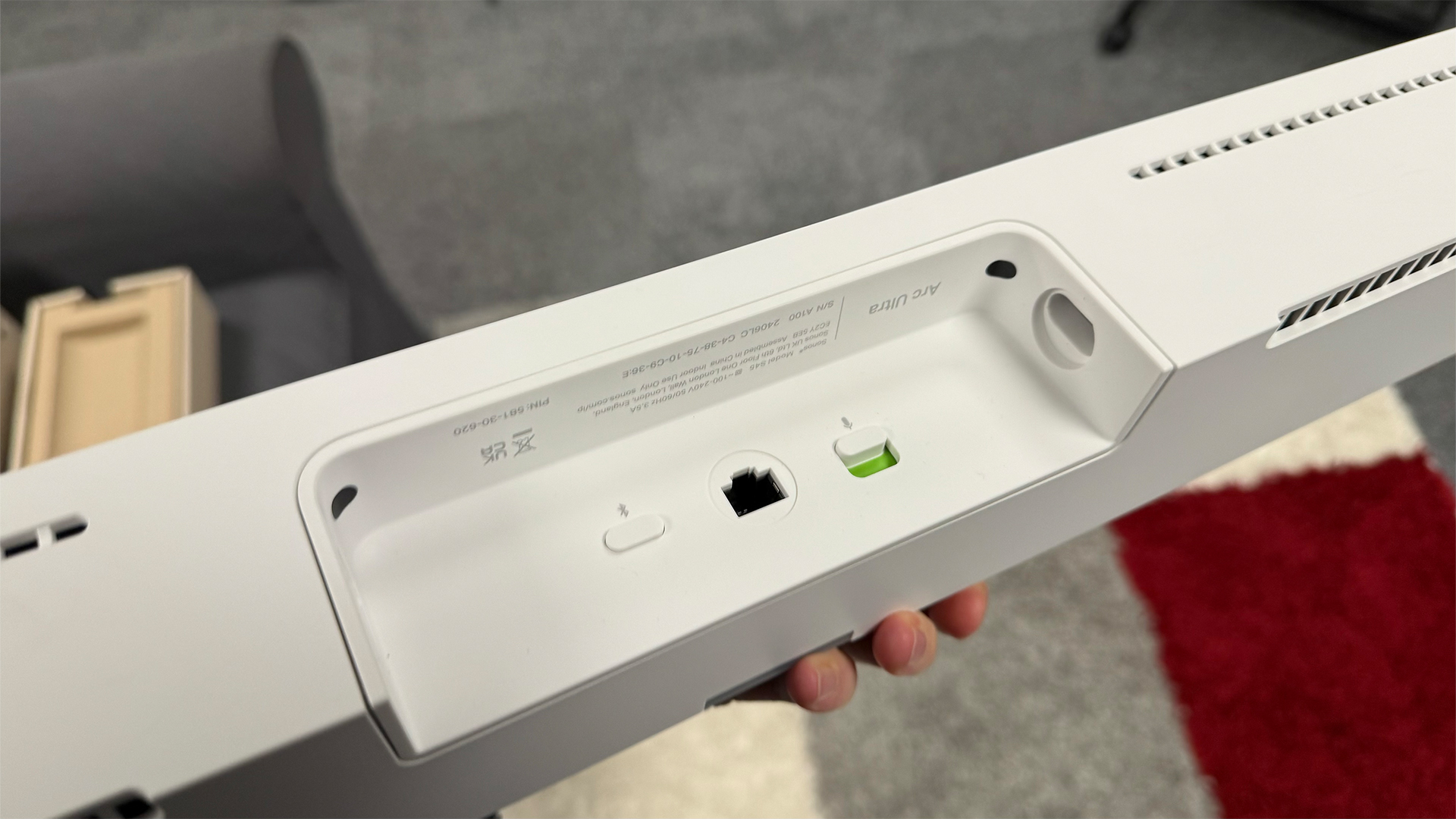
Marshall’s offering packs in a 5.1.2 speaker configuration with 11 drivers (four woofers, three tweeters, side-firing midrange drivers on each end, and two up-firing drivers), each driven by dedicated Class D amplifiers. Total power output is a claimed 150 watts.
Both Dolby Atmos and DTS:X support are present and accounted for, while connectivity options include HDMI eARC (for the connection to your TV) and a dedicated HDMI 2.1 input with 4K/120Hz passthrough capabilities for gamers. There is even RCA connectivity for hooking up a turntable, if you fancy.
Music streaming support encompasses Spotify Connect, Tidal Connect, Bluetooth 5.3, Google Cast, Apple AirPlay 2, and Airable internet radio.
Marshall's sustainability credentials deserve recognition, too, with the soundbar designed for easy repair through user-replaceable components. These include the fret, end caps, drivers, and circuit boards – a rare and commendable approach in the soundbar world.
The Heston 120’s physical knobs provide immediate access to volume, source selection, sound modes, bass, and treble adjustments, while the companion app handles more complex EQ modifications.
Four preset modes – Movie, Music, Voice or Night – cater to different uses, though the absence of a Standard or Direct option may disappoint purists. Room calibration employs built-in microphones, though the effectiveness varies depending on your listening environment.
The Sonos Arc Ultra has more speakers than its newer Marshall rival, with 14 custom-engineered drivers powered by 15 Class D amplifiers in a 9.1.4-channel configuration.
The company’s Sound Motion woofer technology makes the headlines. It uses four lightweight motors in opposing corners instead of a single heavy unit to generate enhanced bass response while maintaining compact dimensions. The dual-cone design moves in opposite directions to create force-cancelling effects that help to eliminate mechanical vibration.
However, Sonos makes notable omissions that may frustrate some users. The Arc Ultra lacks DTS support entirely, limiting spatial audio to Dolby Atmos content only.
Perhaps more significantly, the absence of dedicated HDMI inputs forces all sources through the television's eARC connection, potentially creating bottlenecks for users with multiple high-specification gaming devices and limited HDMI 2.1 ports.
The Arc Ultra's strength lies in its ecosystem integration and calibration. Trueplay room correction offers both Quick (using the soundbar's own microphones) and Advanced options, with Android compatibility making for a welcome addition to the previous iOS-only ability.
Voice control supports Sonos's proprietary system alongside Amazon Alexa and Google Assistant – with Sonos Voice Control and Alexa capable of simultaneous operation for different functions.
Features such as Night mode and Speech Enhancement with adjustable intensity levels provide granular customisation options.
**Winner: Marshall Heston 120**
Marshall Heston 120 vs Sonos Arc Ultra: sound
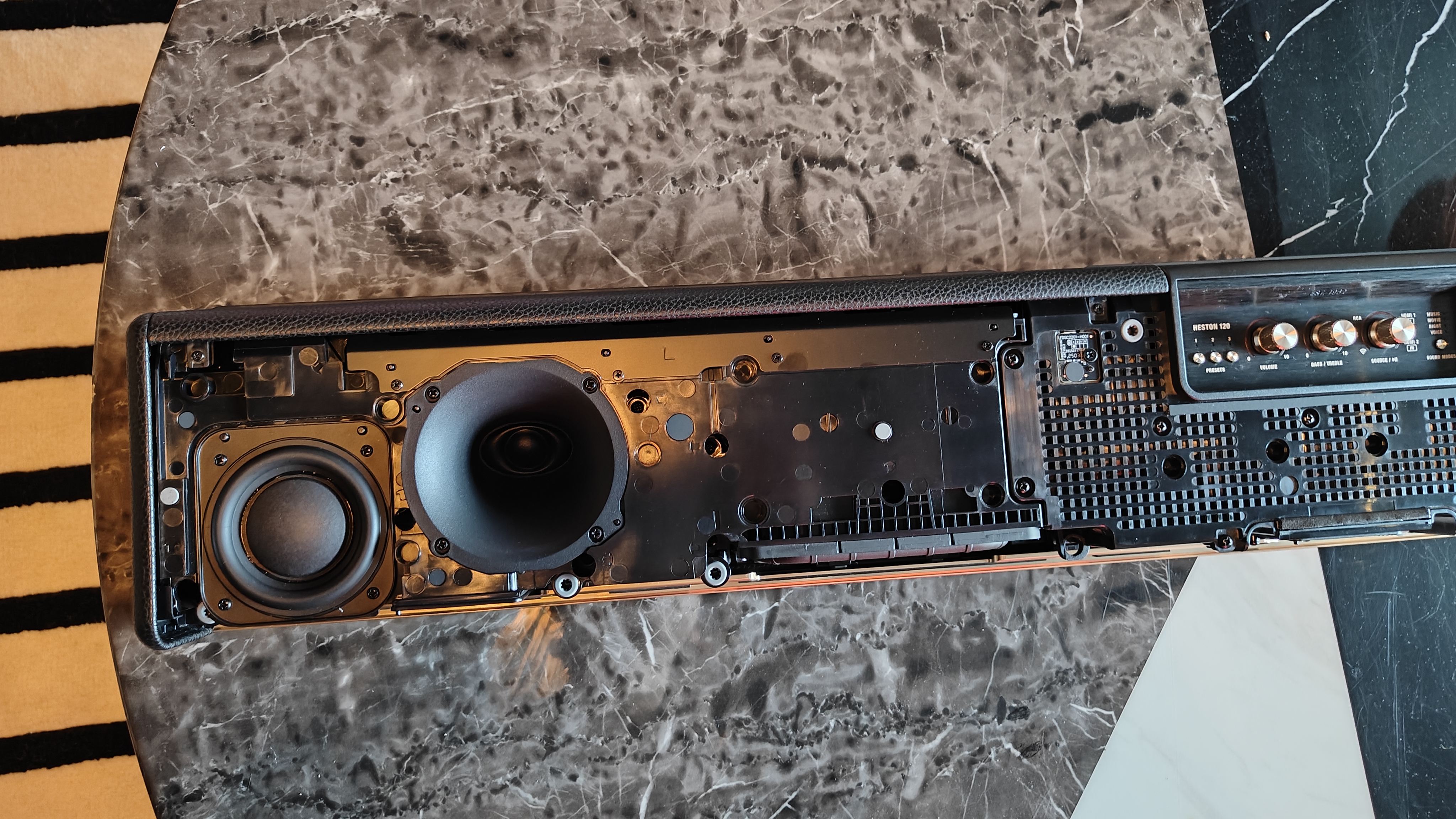
While the Heston 120 wins out in the features department, thanks to its superior format support and connectivity options, inevitably, it is the sound that matters most when buying a soundbar.
On that front, the Marshall's audio delivery reveals both strengths and significant limitations that unfortunately undermine its premium positioning.
The Heston 120 excels in dialogue clarity, maintaining vocal intelligibility even during intense action sequences. Low-level dynamic subtlety ensures voices retain emotional resonance, while the overall tonal balance demonstrates coherent integration between treble, midrange, and bass frequencies.
However, critical weaknesses emerge under demanding conditions. The treble response can become harsh and irritating, with noticeable sibilance affecting speech reproduction. This is particularly evident during dramatic dialogue sequences.
While the Heston 120 produces substantial bass quantities, the low-end lacks extension and tonal flexibility, offering rhythm but minimal nuance in bass reproduction.
The most significant shortcoming, though, lies in dynamic expression and impact delivery. Large-scale volume shifts that should create dramatic tension instead sound flat and underwhelming. This limitation extends to effects that demand punch and solidity – explosions, gunfire, and impacts sound soft and limp rather than exciting and visceral.
The Dolby Atmos implementation proves particularly disappointing as well, confining sound to the television's immediate vicinity rather than creating the immersive, room-filling experience that premium Atmos systems deliver.
Music reproduction is a similar story, with the same dynamic and definition limitations affecting all content types. Vocals emerge clearly, but sound separated from instrumentation, which appears pushed back and cluttered, rather than integrated into a cohesive soundstage.
It’s these hurdles that prevent the Heston 120 from earning more than three stars in our review.
As for the Arc Ultra, it picked up its five-star score thanks to its superior execution across the board. Sonos’s Sound Motion technology, for a start, delivers improved bass response, characterised by improved tonality, agility, and control.
Bass notes exhibit greater force and precision while maintaining tunefulness that makes competing products sound leaden and one-dimensional.
The Arc Ultra's spatial audio capabilities also represent a clear advancement over both its predecessor and most competitors.
Sound-effect placement is remarkably accurate for a solo soundbar, with audio elements appearing to emanate from specific locations throughout the listening environment, rather than merely extending beyond the television's boundaries. Rain effects stretch across the ceiling, voices emerge from above the listening position, and ambient sounds move convincingly through three-dimensional space.
Detail retrieval and dynamic subtlety further distinguish the Arc Ultra's performance. Incidental sounds contribute to atmospheric realism without becoming distracting, while the soundbar handles both micro-dynamics and large-scale volume changes with equal competence.
The overall presentation exhibits increased precision, crispness, and spatial organisation that maintains clarity even during complex, multi-layered sequences.
Musical performance showcases the Arc Ultra’s versatility, too, where it delivers the rhythmic precision and tonal accuracy that has established Sonos’s reputation in multi-room audio applications.
The integration between frequency ranges creates cohesive, engaging reproduction that translates across diverse musical genres effectively.
**Winner: Sonos Arc Ultra**
Marshall Heston 120 vs Sonos Arc Ultra: verdict
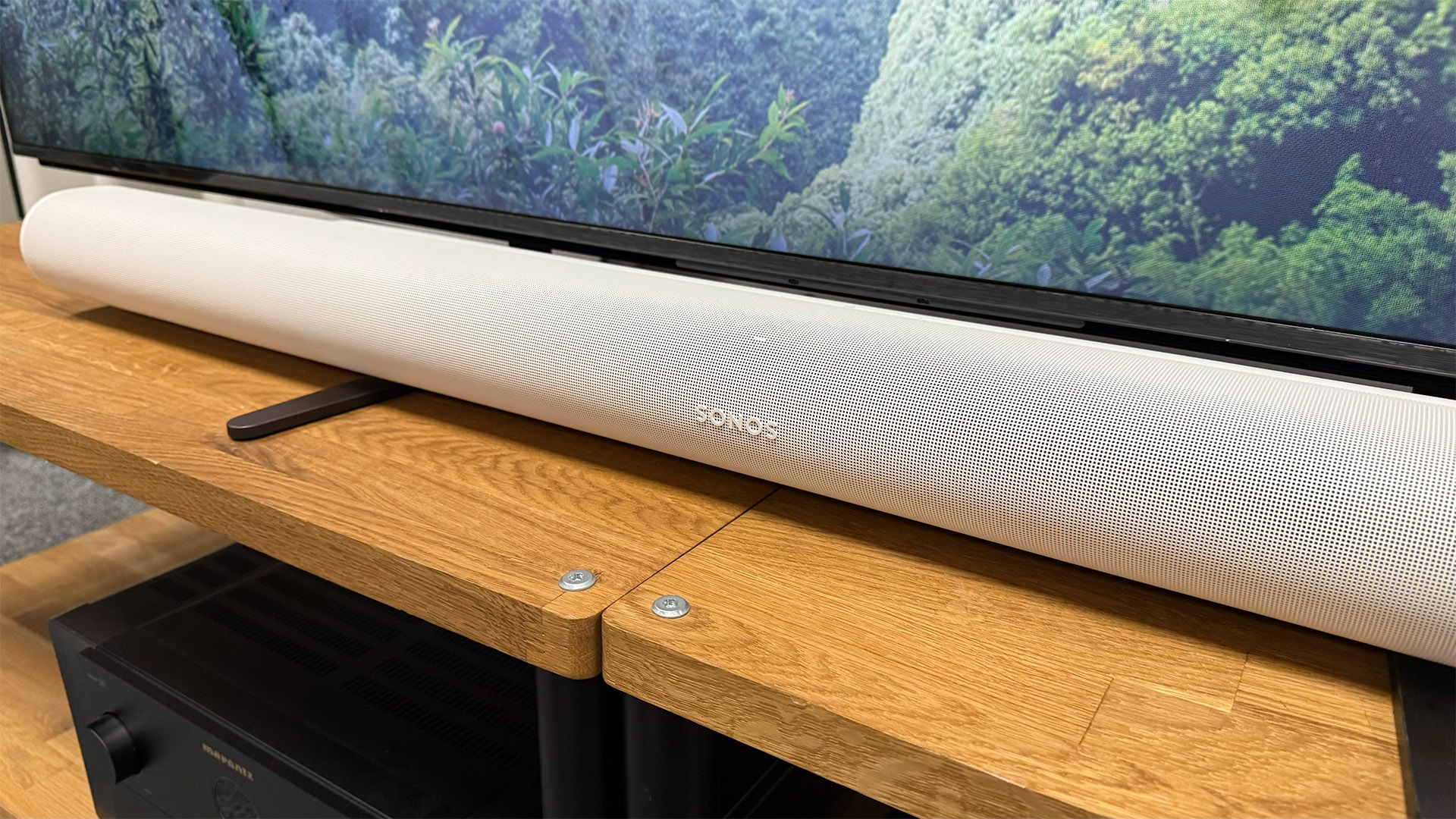
The Marshall Heston 120 is an ambitious but ultimately flawed debut in the premium soundbar category. While its distinctive design will appeal to brand enthusiasts and those seeking visual uniqueness, the audio performance falls significantly short of expectations at this price point.
The fundamental issues with dynamic expression, spatial-audio implementation, and overall engagement prevent recommendation despite the clear dialogue reproduction and attractive build quality.
Marshall’s inclusion of DTS:X support and a dedicated HDMI input provides practical advantages over the Sonos, but these connectivity benefits can’t make up for its substantial sonic limitations.
Sonos, meanwhile, delivers a comprehensively superior product with the Arc Ultra, justifying its premium positioning through genuine technological innovation and proven performance excellence. The Sound Motion technology, combined with its spatial-audio capabilities, provides an immersive experience that defines successful Dolby Atmos implementation.
The Arc Ultra's limitations – primarily the absence of DTS support and dedicated HDMI inputs – represent practical compromises rather than fundamental performance flaws.
For users whose source devices and content libraries align with Sonos’s format support, these limitations should be manageable, especially considering the audio quality on offer.
**Overall winner: Sonos Arc Ultra**
MORE:
These are the best wireless headphones
And the best TVs around

You must confirm your public display name before commenting
Please logout and then login again, you will then be prompted to enter your display name.
